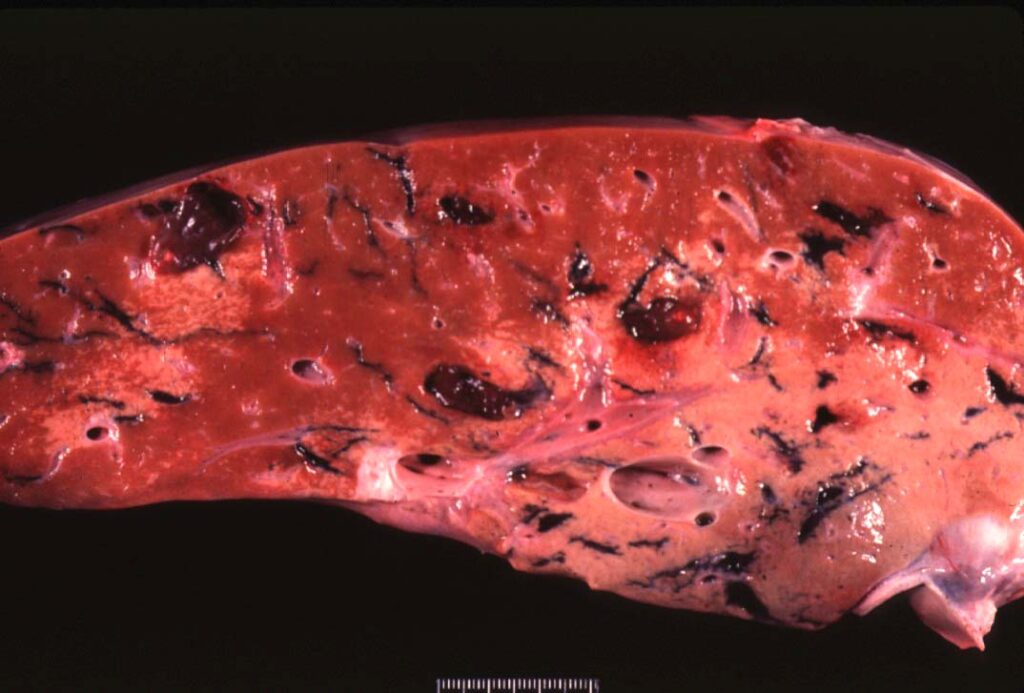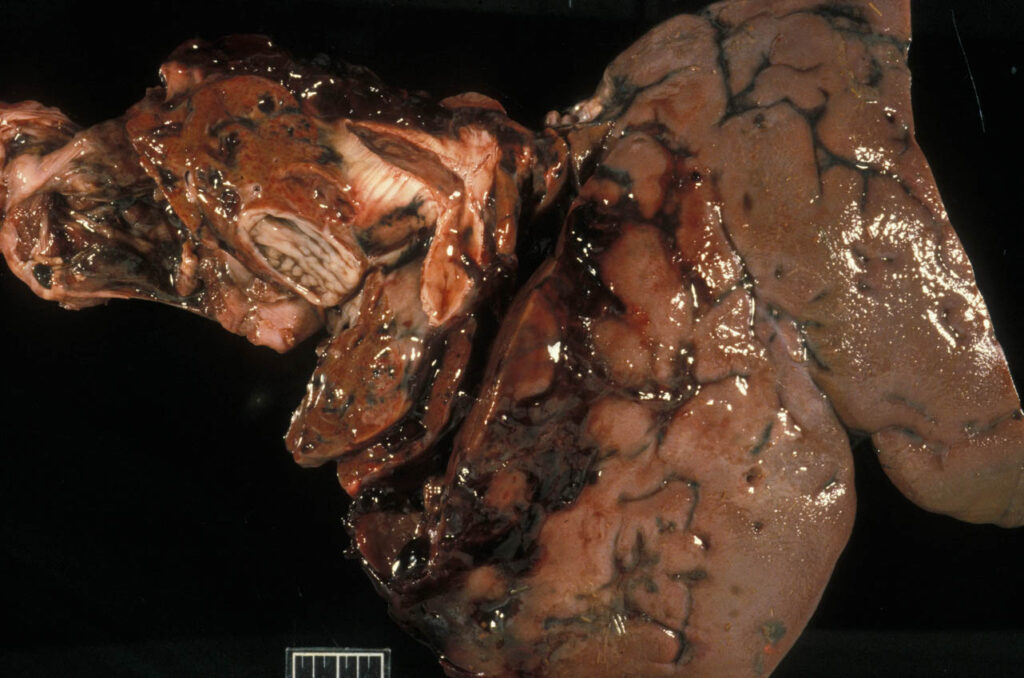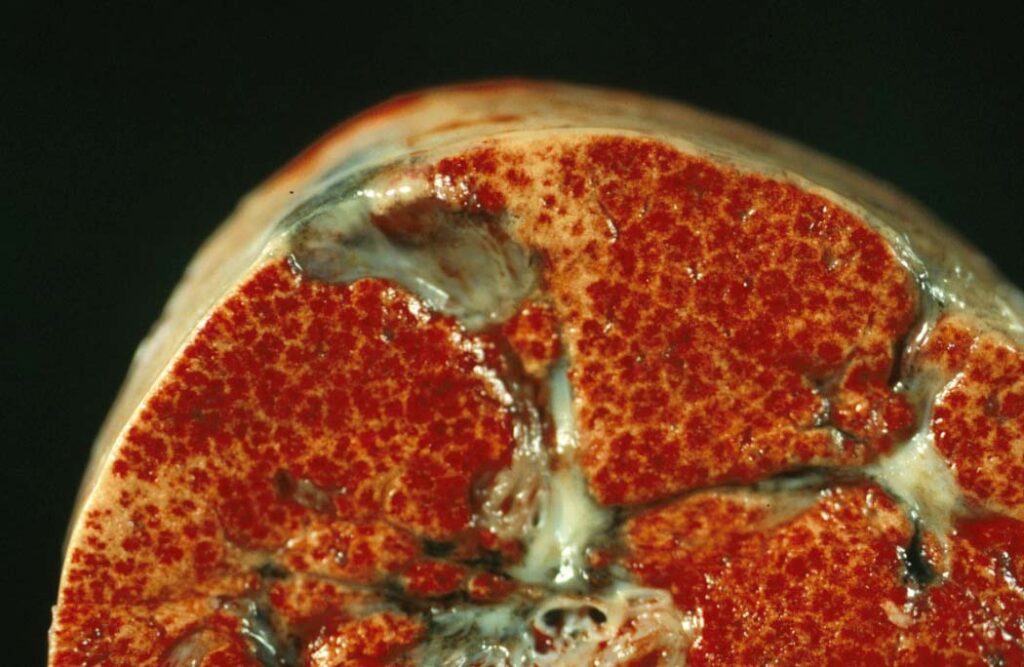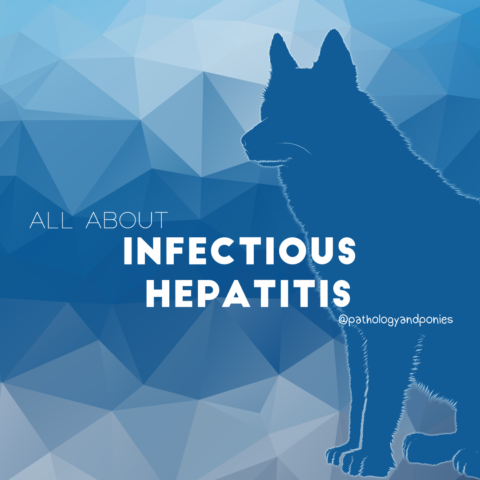Today’s path rounds are on 𝐠𝐢𝐚𝐧𝐭 𝐥𝐢𝐯𝐞𝐫 𝐟𝐥𝐮𝐤𝐞𝐬!
𝐖𝐡𝐚𝐭 𝐢𝐬 𝐢𝐭?
𝐆𝐢𝐚𝐧𝐭 𝐥𝐢𝐯𝐞𝐫 𝐟𝐥𝐮𝐤𝐞𝐬 are a 𝐭𝐫𝐞𝐦𝐚𝐭𝐨𝐝𝐞 (fluke) found in 𝐜𝐞𝐫𝐯𝐢𝐝𝐬 (deer, moose, elk) in North America. These parasites are typically found in the liver of affected animals, hence the name.
𝐖𝐡𝐨 𝐠𝐞𝐭𝐬 𝐢𝐭?
While this fluke typically affects cervids, it is more problematic in our ruminant species.
𝐖𝐡𝐚𝐭 𝐜𝐚𝐮𝐬𝐞𝐬 𝐢𝐭?
The giant liver fluke’s more scientific name is 𝐅𝐚𝐬𝐜𝐢𝐨𝐥𝐨𝐢𝐝𝐞𝐬 𝐦𝐚𝐠𝐧𝐚, magna meaning big! These flukes can be up to 10cm in length, so this name is certainly appropriate for these guys. These flukes produce eggs that are excreted in the bile, and thus end up in the animal’s feces. The eggs then hatch into larvae who attach themselves to a 𝐟𝐫𝐞𝐬𝐡𝐰𝐚𝐭𝐞𝐫 𝐬𝐧𝐚𝐢𝐥. The larvae develop further in the snail, and eventually leave to attach themselves to plants, which get eaten by ruminants.
The young flukes penetrate the wall of the intestine and enter into the liver. Once in their hepatic home, the flukes wander around, looking for another fluke to make eggs with. Once they find their mate, they stop wandering and a 𝐜𝐲𝐬𝐭 forms around them, protecting them from the immune system, and allowing them to lay eggs in peace!
𝐖𝐡𝐲 𝐢𝐬 𝐭𝐡𝐢𝐬 𝐚 𝐩𝐫𝐨𝐛𝐥𝐞𝐦?
The major issue with these flukes is all that wandering they do in the liver, while they are looking for a mate. This wandering produces large, winding migration tracts through the liver that can be up to 2cm in diameter. As you can imagine, this causes extensive damage to the liver, and can even lead to liver failure. In small ruminants, even just 2 or 3 flukes can cause enough damage to kill the animal.
The flukes also aren’t very good at finding the liver, and in some cases can even end up wandering through the lungs or kidneys. This has a similar destructive effect, and can lead to compromise of those organs.
𝐇𝐨𝐰 𝐢𝐬 𝐢𝐭 𝐝𝐢𝐚𝐠𝐧𝐨𝐬𝐞𝐝?
Unfortunately, the flukes are often unable to actually shed eggs from a ruminant host, since that isn’t the species that they’re meant to be in. So diagnosis based on a fecal sample is very difficult. The best method of diagnosis is finding the flukes at necropsy. If you can’t find a fluke, their jet black migration tracts will give you a pretty good clue!
𝐇𝐨𝐰 𝐢𝐬 𝐢𝐭 𝐭𝐫𝐞𝐚𝐭𝐞𝐝? 𝐇𝐨𝐰 𝐢𝐬 𝐢𝐭 𝐩𝐫𝐞𝐯𝐞𝐧𝐭𝐞𝐝?
Typical antiparasitics have been shown to be effective against this fluke, however prevention is always best! Keeping animals separate from cervids, and out of moist areas where snails might live, is the best method of prevention for our ruminant species.
𝐏𝐡𝐨𝐭𝐨𝐬
1) What the flukes look like!
2-5) Examples of the jet black migration tracts through the liver. The flukes produce 𝐩𝐨𝐫𝐩𝐡𝐲𝐫𝐢𝐧 as they wander around, which produces the dark colour we see at necropsy!
6) An example of migration tracts through the lung of a sheep!
𝐒𝐨𝐮𝐫𝐜𝐞𝐬
Maxie, G. Jubb, Kennedy and Palmer’s Pathology of Domestic Animals, Volume 2. Sixth Edition.
Photos 1-6 © Noah’s Arkive contributors King, Acland, Wright, Harmon, Wolpert, Daoust licensed under CC BY-SA 4.0.










